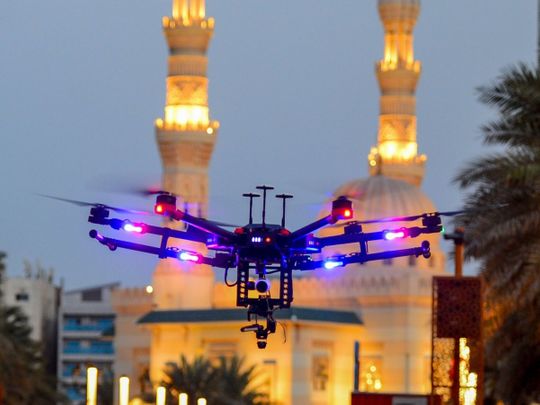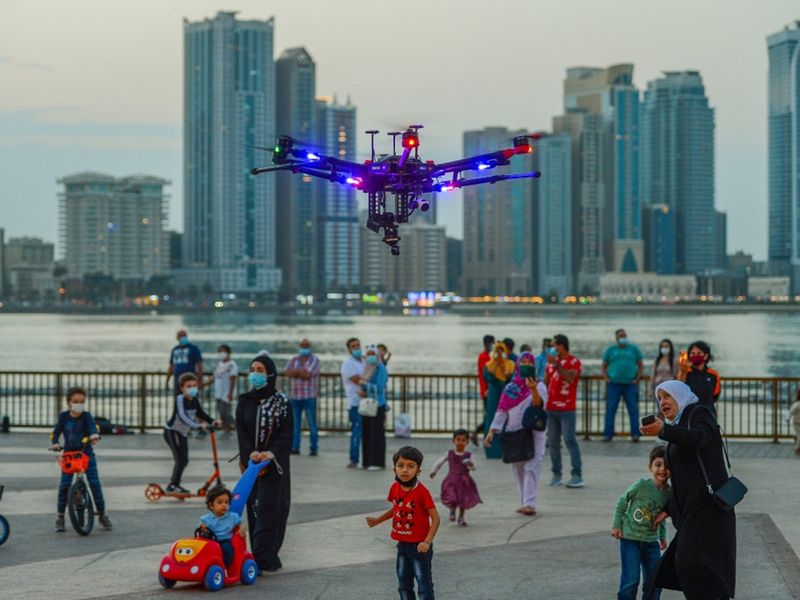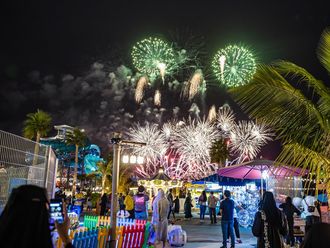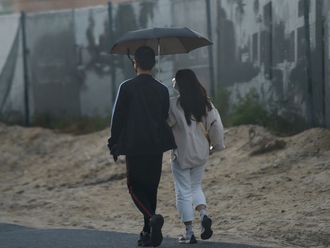
Sharjah: Sharjah Police have introduced new hi-tech drones that use face-recognition technology to help police search for suspects believed to have committed a violent crime.
The drones are the latest among a slew of initiatives adopted by Sharjah Police for advanced forms of facial recognition that make it easier to track wanted criminals.
To track down a suspect, the police feed his or her photograph into a video surveillance network powered by artificial intelligence (AI). The drone camera then scans roads with crowded people, instantly analysing the faces of everyone it sees. The system helps in finding matches of wanted criminals among those in the crowd and help the police to arrest him or her.
The drones, fitted with infrared video cameras, are also being used to spot reckless drivers, in an attempt to boost road safety in Sharjah. The drones capture photos and videos of the violating vehicles, in addition to monitoring the roads and finding the reasons behind traffic jams and accidents. The drones are also being used to catch violators of COVID-19 safety protocol.

Captain Saeed Bin Hada, Director of the Innovation Branch at Sharjah Police, told Gulf News that a total of 200 operations have been carried out by using drones in the past month.
Spotting traffic violations
Sharjah Police started using drones in 2016 at the media section and then moving the devices on to a wider range of operations. Traffic violations caught by the drones included driving on the hard shoulder, failure to maintain lane discipline and obstructing traffic. The drones are fitted with cameras that allow the police to read the licence plates of vehicles, spot traffic breaches and detect structural faults on the roads. The drones can also be used to monitor problem areas such as zones affected by floods or other natural disasters.
* Traffic accident scene investigations
* Searching for missing persons
* Locating suspects
* Rescue operations
* Detection of illegal activities or operations related to public safety or spotting of actions that cause inconvenience to the public
* Securing sensitive areas
* Crime scene investigations
* Interventions during various incidents
* Patrolling industrial sites and sites that may contain hazardous substances
* Controlling any kind of group or mob violence, by issuing orders through the drones
* Surveillance of public events (sporting events, concerts)
* Actions against drug peddlers
* Monitoring punitive and rehabilitation establishments.
Captain Bin Hada said the drones take video footage of accidents and identify locations where there are major traffic jams. This helps the traffic patrols to clear out the congestions faster and more efficiently in these areas. He said the drones can also take pictures of emergency situations that are sometimes inaccessible to photographers, such as certain traffic accidents and fire incidents.
High-definition images and video footage
During a recent fire incident at Abbeco Tower in Sharjah, drones helped in discovering a group of residents trapped in the burning building and the emergency team was rushed to rescue them. The drones can operate around-the-clock and can capture high-definition images and video footage from a long distance. Police drones shot images of the fire at Abbeco Tower using this technology, he said.
“Using drones at accident scenes enable the police to collect evidence faster and more easily. Investigators can then download the data and use special imaging software to take measurements of the scene. They can also move around the virtual scene and view it from many different angles. Previously, investigators had to measure a scene using on-the-ground surveyor tools only.”
He said the newly-developed drones can live-stream the images and videos of emergencies to patrol vehicles and senior officers at the central operations room, which help them take appropriate decisions immediately. Police drones are also used in searching for missing and vulnerable people in the sea and mountains. The drones can carry a weight of more than 30kg and can supply ropes and safety jackets to the affected persons.
The drones are equipped with high-definition cameras having powerful zoom capabilities. Combined with thermal cameras, they are able to capture images even at night and in darkness. They are also able to see bodies underwater. These drones can take off from almost anywhere and keep hovering for a long time.
Shooting bullets
By observing from above, the drones can limit the risk of exposure of police officers and thus save human lives. It can also be used to shoot bullets (like a gun). “We have had a number of successes across the emirate where offenders in stolen vehicles trying to evade the police have been apprehended with drone support,” Captain Bin Hada added.

Police operation headquarters remain in permanent contact with the drone pilots so they can guide the ground special units and squads (SWAT). Decision-making is thus easier and faster — thanks to the site overview that the embedded cameras offer in real time to the officers in charge of the operation. Police have a fleet of small and big drones that are operated by 24 pilots around the clock. The drone air support contributes significantly to improve public security, including for policemen deployed in the field.
Case study
In one incident, a drone rescued a child and returned him to his family.
While the family was seated in Al Qasba, Sharjah, the child went drifting far away from them without the family members’ knowledge. Fortunately, police officers had an eye on the boy, through a drone, from the moment he left his family and went close to the road. The officers then got hold of the boy and took him back to his family, urging the family members to be more watchful.
Sharjah Police recently launched a first-of-its-kind smart patrol system that involves five high-tech cameras and a drone equipped with AI technology. “The 5G-enabled patrol aims at reducing the response time, expedite transfer of data in the security sector, connecting a high-resolution patrol camera equipped with AI to the command room,” Captain Bin Hada added.
In another incident, police were called in when a fight broke out in a group. As a police patrol was moving to the site, an officer launched a drone that reached the site before the police team. Based on the feedback provided by the drone, the officer started issuing instructions to the people via the drone and told them that the police patrol would reach the site soon. The drone helped the officer to have a look at the scene of the fight and decide on the line of action even before the police patrol reached the site.









